I have a guilty confession about The Neverending Story. The very first time I picked it up was for cynical reasons — it was the favorite book of someone I had a crush on, so of course I had to read it. On the first reading I simply saw it as a children’s book, and a staggeringly good one to boot. The second time through I read it as a novel with a depth and complexity that astounded me. The third time through, I decided I had to write the thing up. Because despite how famous and well-loved this novel is, I have never seen any critical analysis that does it justice.
Perhaps the lack of critical readings is because the novel has long been eclipsed by the movie version and hence dismissed as a children’s fantasy. The Neverending Story was originally published in 1979 as Die unendliche Geschichte by Michael Ende. The book was a hit in Germany and even became popular in the West German anti-nuclear movement, although I haven’t the faintest idea why. Two things followed on the heels of the book’s success: the translation into English in 19831 and the film version in 1984. In both the movie and the novel we have Bastian Balthazar Bux, a schoolboy who steals a book called The Neverending Story and begins to read. The further he goes, the more obvious it is that reality and the fictional kingdom of Fantastica are becoming intertwined. Ultimately Bastian enters the fictional world in book he has stolen. I say “ultimately”, but that’s misleading. This point heralds the end of the film, leaving us with a kids’ adventure fantasy and a cheap parable about the power of imagination2. However, this is only the half-way point of the novel. Once in Fantastica, Bastian undergoes a scouring transformation thanks to his charter to rebuild the kingdom with his creative powers. The novel is not a simple parable about imagination, but a brilliant, kaleidoscopic fantasy and a dark exploration on the nature of power.
Good Intentions
The Neverending Story has the longest opening I’ve ever seen. It’s not the prologue and it’s not the first chapter. It turns out to be no fewer than twelve chapters describing Atreyu’s quest to find a cure for the Childlike Empress and the Nothing that is consuming Fantastica. But the quest is pure fakery — Atreyu was never meant to find out what’s wrong with the Empress. She already knows what’s wrong with her, and the only person who can fix it is a human who happens to be reading the book. Therefore the Childlike Empress needs an adventure to hook herself a reader. She needs a spectacle.
Michael Ende knows full well the quest is a trick and actually uses his twelve chapters to gently make fun of the genre he’s working with. Atreyu’s quest is riddled with MacGuffins and deus ex machina. AURYN is a magic charm that guides Atreyu where he needs to go. Falkor is a luckdragon whose innate luck can get Atreyu out of sticky situations. Even the problems Atreyu has to solve are solved for him. When Atreyu faces the three magic gates at the Southern Oracle, you might expect he needs to rally all his powers to pass them. He doesn’t. Atreyu effectively breezes through all three gates with nothing more than a generic kind of bravery — because Atreyu is a generic kind of hero. Of course he’s going to get through the gates, he’s the protagonist! Uyulala3 even says it, although Atreyu does not understand her: “We do what we were invented for”. Atreyu is an invention, a narrative device, and such a generic hero that the Mirror Gate, which reflects your true self, shows him an image of Bastian. As the hero of an adventure, Atreyu is little more than a projection of Bastian into a fantasy world. And Bastian is in turn a projection of ourselves. After all, he loves books, he has a hard time in school and he’s funny-looking. Isn’t that us? His name might as well be Harry Potter.
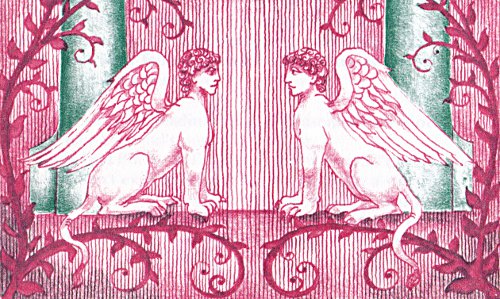
At this point the story begins to recurse. We’re reading a book called The Neverending Story and imagining ourselves inside it. Bastian is also reading The Neverending Story, and the description of his book precisely matches ours4. The Old Man of Wandering Mountain has the job of chronicling everything that happens in Fantastica from its beginning to its end — which he does in a book that is exactly the same as Bastian’s. And now we dive into the rabbit hole. The Old Man re-reads the Neverending Story from the start and narrates himself reading it. When he reaches the present again, he narrates himself narrating himself re-reading the story. We’ve reached an infinite loop.
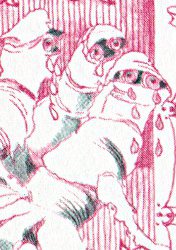
The only thing that can break the loop is Bastian, who finally enters the plot proper and begins to rebuild Fantastica using his imagination and the authority of the Childlike Empress. But the exercise of absolute power eats away at Bastian and he quickly becomes unrecognizable as the character we started with. The real turning point in my opinion, and the first time when Bastian’s wish blows up in his face, is when he attempts to be merciful to the Acharis5 by turning them into the Shlamoofs. Bastian only winds up robbing them of their dignity and their ability to create beauty. The Shlamoofs bite him in the ass again later in the novel by destroying the one, delicate memory that can lead Bastian out of Fantastica. The Shlamoofs represent an important moment because, even though we were a bit cagey about Bastian’s egotism in Amarganth6, this is the first time we’ve seen that good intentions can go bad. Here Ende starts to make his real point. There is no such thing as good government and no such thing as a benevolent dictator — Bastian’s attempts to improve the world only lead to the same mix of beauty and ugliness as before, not to mention the annihilation of his own character. But even though we know Bastian is on a bad road, we keep hoping Atreyu will save him from himself. Even at the Battle for the Ivory Tower it seems like Atreyu might win. But when Bastian draws his sword Sikanda7 by force and strikes Atreyu down, we know he’s no longer the character we fell in love with in the the prologue, the fat, underachieving little boy who stole a book to escape the world around him.
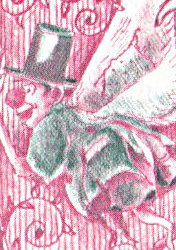
Bastian finally comes down off his terrible high at the City of the Old Emperors, where he realizes the mistakes he has made. The world is the way it is for a reason — it’s not like Bastian is the first person to have good intentions. The City of Old Emperors is full of madmen who tried to make a beautiful world, and yet they have wound up utterly destitute after producing the same kind of world as the one they replaced. Michael Ende has torn down all the self-importance, ambition and tyranny in Bastian, but what he does to rebuild him is just as important. What are the things that matter to Bastian in the end? A sense of belonging to a community among the Yskalnari, who have so little regard for the individual that they have no word for “I”; the unconditional, maternal love of Dame Eyola8; the ability to love others like his father; and the friendship that he renews with Atreyu and Falkor. They are all personal interactions.
Monsters
The Neverending Story devotes a surprising amount of time to loops, cycles and recursions. As I mentioned above, the book itself is recursive, but so is the very symbol of Fantastica — a light snake and a dark snake eating each other’s tail. Perilin, the Night Forest, alternates with Goab, the Desert of Colors. Dame Eyola blossoms and dies again and again. But it’s Morla the Aged One who says it first and, I think, best:
“Sakes alive!” Morla gurgled. “We’re old, son, much too old. Lived long enough. Seen too much. When you know as much as we do, nothing matters. Things just repeat. Day and night, summer and winter. The world is empty and aimless. Everything circles around. Whatever starts up must pass away, whatever is born must die. It all cancels out, good and bad, beautiful and ugly. Everything’s empty. Nothing is real. Nothing matters.”

She is old enough to know the pattern Fantastica is built on — its repeated destruction by the Nothing and its recreation with the renaming of the Childlike Empress. She is even content with the existence of evil in the world and so, for that matter, is the Childlike Empress. Here is a ruler who “never judged anyone. She never interfered with anyone … In her eyes all her subjects were equal … every creature, whether good or bad, beautiful or ugly, merry or solemn, foolish or wise — all owed their existence to her existence.” Fantastica is founded on the co-existence of good and evil — a light snake and a dark snake perpetually eating each other’s tail — and an empress who is herself two-faced. For while she has the appearance of sweetness and light, her strategy for ruling Fantastica is astoundingly nasty.
There are two kinds of power: authority and influence9. The Childlike Empress is an empress and hence an absolute monarch with regal and military authority. And yet she never uses it: “She didn’t rule, she had never used force or made use of her power. She never issued commands”. Here is a ruler who thrives on influence. The only reason people respect her is because she lets them go about their business without bossing them around. If she ever exercised absolute power (“Peel me a grape. Fry me an elephant. Where is my gold-plated sailing barge?”) she would lose all respect. But there is a much bigger danger in the exercise of power: losing yourself. When your every wish is granted, how can you maintain your integrity? First you make yourself attractive, then strong, then brave, then loved. You have earned none of these things and very soon there is nothing left of who you used to be.
The Childlike Empress won’t lift a finger to govern Fantastica. Actually she can’t, not without losing her authority and risking self-immolation10. That’s why she needs Bastian — she can’t run the place herself, so she brings humans to Fantastica to do it for her. She acts like a siren, luring perfectly normal humans onto the rocks. But she’s more than happy to let these people wreck themselves, she encourages them by giving them a deceptive charter, “DO WHAT YOU WISH”. The temptation is to think you can “do anything [you] feel like”, but the hidden meaning is that “you must do what you really and truly want”. The Childlike Empress is so Janus-faced that she even gives Bastian his very first corrupt idea. It’s only by gazing into the Empress’ eyes that Bastian gets the idea to change his appearance:
In the golden mirror of her eyes, he saw, small at first as though far in the distance, a reflection which little by little grew larger and more distinct. It was a boy of about his own age; but this boy was slender and wonderfully handsome. His bearing was proud and erect, his face was noble, manly — and lean.
The Childlike Empress doesn’t just give Bastian the rope to hang himself, she also kicks the stool out from under him. What a bitch. Well, I say bitch, but we’ll never know what the Fantasticans might have called her. Atreyu and Falkor have a fascinating exchange in which they realize that their empress has a darker side, and yet Falkor refuses to speak ill of her:
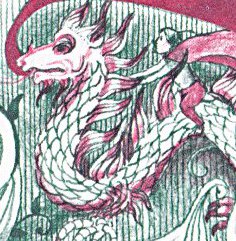
“Falkor,” Atreyu asked, “do you suppose the Childlike Empress cares what becomes of Bastian?”
“Maybe not,” said Falkor. “She draws no distinctions.”
“Then,” said Atreyu, “she is really a …”
“Don’t say it,” Falkor broke in. “I know what you mean, but don’t say it.”
What word could possibly have finished that sentence? The only one I can think of is “monster”, the same word used to describe Ygramul, the sphinxes, Gmork, Smerg, Xayide’s metal golems and, by extension, Bastian at the depths of his corruption11.
There is a strange kind of moral apathy in The Neverending Story. We are supposed to accept the combination of good and evil in the world as inevitable. Morla is old enough to have seen the cycles of good and evil repeat and she just doesn’t care any more: “It all cancels out, good and bad, beautiful and ugly. Everything’s empty. Nothing is real. Nothing matters.” Even the Empress can’t be pure evil, despite all that she does to hamstring the humans in Fantastica. She is, after all, ensuring the survival of an extraordinary world that is just as much a mix of good and evil as its ruler. The moral, in the end, is to inspire the best in people around you rather than trying to fix everybody else’s problems. By trying to improve Fantastica by force, Bastian demonstrates how dangerous good intentions can be. But this is what changes in Bastian by the end of the novel. He has learned not to regard himself as the arbiter of justice and the divine ruler. He no longer wants to exercise power and change the world. He has instead learned to acknowledge himself and to treasure his personal relationships like his friendship with Atreyu and his relationship with his father. It is an argument for influence over authority.
Oz and Odd-Fish
So far I’ve been nothing but positive about The Neverending Story, and with good cause. I really believe it’s a work of genius, and certainly one of the most perfect novels ever written. However I can’t skip over the one bit that really bugs me. Readers of this blog will know I picked a bone with The Wonderful Wizard of Oz because of the treatment of sentient animals. It would be two-faced of me not to point out the same problem in The Neverending Story. In a fantasy world where all the animals are sentient, who are they eating when they cook meat? Because I promise you they are not all vegetarians. The issue here doesn’t just end with the novel’s one or two references to carnivorism — The Neverending Story takes the blunder so much further by making certain animals into a slave class. Characters like Yikka the mule (and to a lesser extent Falkor) are just beasts of burden who exist to ferry the other characters around. Read this and tell me it doesn’t curdle your blood:
When Bastian returned to the inn, the three knights were ready. They had taken the pack saddle off Yikka and replaced it with a richly ornamented riding saddle. Yikka didn’t learn why until Bastian came over and whispered in her ear: “You belong to me now, Yikka.”
As the ferry carried them away from the silver city, the old pack mule’s cries of joy resounded over the bitter waters of Moru, the Lake of Tears.
Am I the only one who pictures Yikka as a battered wife? But perhaps Ende has pre-empted me here. We already know Fantastica is full of good and evil, so it’s possible that murder and slavery are part of the world’s complex and not altogether palatable texture.
The Neverending Story may suffer from its comparison with The Wonderful Wizard of Oz, but I think it benefits from another. The Neverending Story duels for the top place in my favorites with only one other novel: The Order of Odd-Fish12. Both are young adult fantasy, but with a self-evident genius that should rightly appeal to any age. Both have the most incredible breadth of imagination — the cavalcade of extraordinary ideas and imagery never stops. But here’s the kicker: neither one subscribes to a Judæo-Christian morality. Judæo-Christian mythology and philosophy really set the tone of our society. Everything is either good or evil — we abhor anything too complicated. We always talk about God as if he’s that big beardy bloke sitting on a cloud making rainbows for orphans, and we talk about the Devil as if he’s a real person with red skin and a pitchfork that he likes to stick up people’s bottoms. Harry Potter is a great example of a novel in the Judæo-Christian tradition. The novels are never about Christianity, but the notion of Good vs. Evil informs the whole conflict between Harry and Voldemort.
But both The Neverending Story and The Order of Odd-Fish take a far more complex view of the world. Both worlds are filled with an infinite variety of peoples, gods and legends. Both novels have characters that are neither good nor bad but a combination of both. The Childlike Empress is beautiful and is the genesis of everything in Fantastica, but she is also a soulless, amoral siren. Bastian is so likeable and so eager to help, and yet his thoughtless ambition corrupts him so much that he screws over his friends and declares war on Fantastica. Likewise, in Odd-Fish Jo is supposed to be the good guy and yet she is a hideous monster who is fated to destroy the world. Even someone as diabolically evil as the Belgian Prankster was once Sir Nils Van der Woort, a knight of the Odd-Fish. Instead of pigeonholing all our characters into neat, binary archetypes, both these novels give us a far more complex, far more interesting story where the protagonist manages to be both the good guy and the bad guy at once.
The Wrap
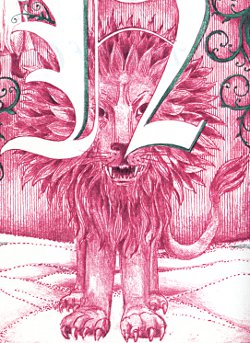
At the end of the day, I feel like the keystone character of The Neverending Story isn’t any of the leads. It’s Grograman, the Many-Colored Death. He is the only character that embodies all of the good and evil in Fantastica, all of its cycles, beauty and complexity. He turns to stone every night so that the desert can grow into Perilin the Night Forest, and when he wakes up the heat from his body burns the forest down again. He is a poetic combination of good and bad: “my dying gives life and my living death, and both are good.” His fiery existence spells death for anyone who enters the bounds of the desert he carries with him, and yet he is a benevolent creature who is a good friend to Bastian. He is the only person who ever warns Bastian of the true problem he’s facing and the only character who ever sums up the point of what we’re reading:
“It requires the greatest honesty and vigilance, because there’s no other journey on which it’s so easy to lose yourself forever.”
“Do you mean because our wishes aren’t always good?” Bastian asked.
The lion lashed the sand he was lying on with his tail. His ears lay flat, he screwed up his nose, and his eyes flashed fire. Involuntarily Bastian ducked when Grograman’s voice once again made the earth tremble: “What do you know about wishes? How would you know what’s good and what isn’t?”
But of course Bastian can’t learn it just by being told. It’s something he has to live, and it’s something we have to experience through him. It would be nice to think we’re just as capable of learning from the past, but switch on the news. Dozens of people fight tooth and nail for the highest office in the land, some of them out of a lust for power and some of them who think they can change the world. They are merely the latest in a long line of rulers who stretch way back to Rome, Greece, Egypt and beyond. Who is really naïve or power-mad enough that they think they’ll be different? Real change is not brought about by the big men in office, it is brought about by the social currents that spring from our day-to-day lives. What shapes the world is the way we treat each other and the way we inspire the people around us.
Notes
-
Although I am lucky enough to have an early (if not first) edition of the German on my bookshelf, I can’t read a word of it. This article will deal with the English translation, which is so beautifully written I can only hope the original does it justice! ↩
-
It’s best to let Ende speak for himself about “that revolting movie … The makers of the film simply did not understand the book at all. They just wanted to make money. I worked as an adviser because I wanted a beautiful movie. I trusted them. I saw the final script five days before the premiere and only as a result of a judicial verdict in Munich. I was horrified. They had changed the whole sense of the story. Fantastica reappears with no creative force from Bastian. For me this was the essence of the book.” (Bentley, “An Irate Michael Ende”) ↩
-
Etymology in The Neverending Story: I seethe with envy for anyone skilled enough to trace the origins of all the Fantastican names, but I can at least do some. Ululare is Latin for “to howl, yell”. ↩
-
Or would, if you happen to have the hardcover edition with copper cloth binding and Fantastica’s two snakes embossed on the cover. Ende fought against the paperback publication of his novel because it broke the recursion. ↩
-
Etymology in The Neverending Story: acharis (ἄχαρις) is ancient Greek for “without grace or charm”. ↩
-
Etymology in The Neverending Story: this one might be tenuous but amarygma (ἀμάρυγμα) is ancient Greek for “sparkle, twinkle”. Seems to fit for a city made out of silver. ↩
-
Etymology in The Neverending Story: secanda in Latin means “for cutting things”. ↩
-
Etymology in The Neverending Story: aiuola is Italian for “flowerbed”. The connection is a little clearer in the original German, where Dame Eyola is “Dame Aiuóla”. ↩
-
I have cribbed my understanding of power from ancient Roman philosophy. I have no reason to think Ende had the Romans in mind, but they still give us a handy vocabulary for talking about power. The Romans described imperium, which meant the authority to command — when you say jump, everybody jumps or else gets thrown to the lions; and auctoritas, which meant personal influence — when you say jump, everybody jumps because you’re a really nice guy and they respect you. Auctoritas was far and away the more desirable kind of power because it meant everybody loved you. Imperium was necessary too, but over-using it was the hallmark of a tyrant. People would soon feel abused and resentful. ↩
-
There is also a question of whether the Empress is physically capable of it. Fantasticans don’t have the power to create stories, so it’s possible the Empress couldn’t govern Fantastica even if she wanted to. Even so, that doesn’t ameliorate her knowing treachery towards the humans she brings to Fantastica. ↩
-
I say by extension because he is never directly called a monster. However he is compared with the metal creatures for being so susceptible to Xayide’s will (“My will can control anything that’s empty.”) So if they’re monsters then Bastian can be a monster too. ↩
-
While Odd-Fish lacks the thematic depth of The Neverending Story, it does something else: it shares with us a boundless enthusiasm for all the cool, weird and exciting things in the world. Its love of knowledge, language and exploration is something it often shares with Doctor Who and is part of the inspiration for my own work. I should be lucky enough to write up Odd-Fish at some point. ↩
Bibliography
-
Beckett, Sandra L. Crossover Fiction. New York: Routledge, 2009. Print.
-
Bentley, Logan. “An Irate Michael Ende Blasts the ‘Disgusting’ Film Made from His Best-Seller, The Neverending Story”. People 22.9 (1984). Web. 21 January 2012 <http://www.people.com/people/archive/article/0,,20088527,00.html>.
-
Department of Classics, Tufts University. Perseus Digital Library. Tufts University, 2012. Web. 20 January 2012 <http://www.perseus.tufts.edu/hopper/>
-
Ende, Michael. Die unendliche Geschichte. Stuttgart: K. Thienemanns Verlag, 1979. Print.
-
Ende, Michael. The Neverending Story. Trans. Ralph Manheim. Garden City: Doubleday & Company, 1983. Print.